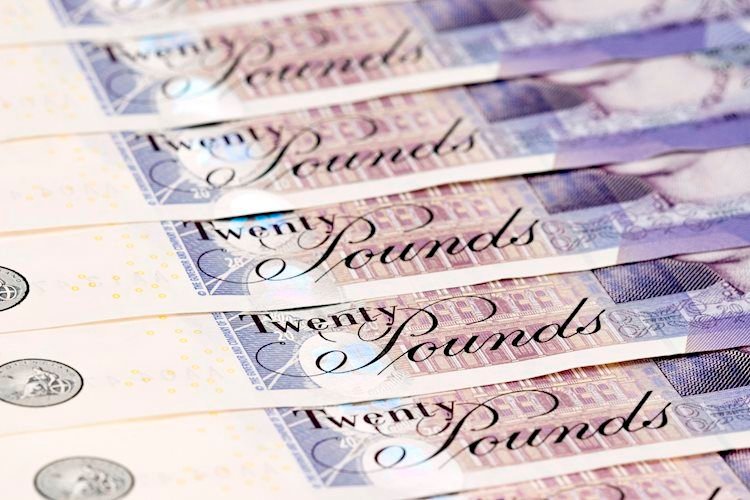- GBP/USD struggles to gain any meaningful traction and remains confined in a range.
- A modest USD strength caps the pair amid bets for more aggressive BoE policy easing.
- The technical setup favors bearish traders and supports prospects for further losses.
The GBP/USD pair extends its sideways consolidative price move at the start of a new week and oscillates in a narrow trading band around mid-1.3000s through the first half of the European session. Meanwhile, spot prices remain close to a one-month low and seem vulnerable to prolonging the recent retracement slide from the 1.3535 area, or the highest level since March 2022 touched last month.
The British Pound (GBP) continues with its relative underperformance amid speculations that the Bank of England (BoE) might be heading towards speeding up its rate-cutting cycle. In contrast, the markets have fully priced out the possibility of another oversized interest rate cut by the Federal Reserve (Fed), which assists the US Dollar (USD) to stand tall near a two-month peak and acts as a headwind for the GBP/USD pair.
From a technical perspective, last week’s close below the 50-day Simple Moving Average (SMA) – for the first time since August 12 – was seen as a fresh trigger for bearish traders. Moreover, oscillators on the daily chart are holding deep in negative territory and are still away from being in the oversold zone. This validates the near-term negative outlook and suggests that the path of least resistance for the GBP/USD pair is to the downside.
Some follow-through selling below the 1.3000 psychological mark, or the September monthly swing low, will reaffirm the bearish bias and expose the 100-day SMA, currently pegged near the 1.2945 region. A convincing break below the latter has the potential to drag the GBP/USD pair further towards the 1.2900 round-figure mark en route to the next relevant support near the 1.2860 horizontal zone and the 1.2825-1.2820 support zone.
On the flip side, the 50-day SMA support breakpoint, around the 1.3100 mark, now seems to cap any attempted recovery move, above which a fresh bout of a short-covering should pave the way for additional gains. The GBP/USD pair might then surpass an intermediate hurdle near the 1.3155-1.3160 region before aiming to reclaim the 1.3200 round figure and climb to the 1.3265-1.3270 resistance zone.
GBP/USD daily chart
Pound Sterling FAQs
The Pound Sterling (GBP) is the oldest currency in the world (886 AD) and the official currency of the United Kingdom. It is the fourth most traded unit for foreign exchange (FX) in the world, accounting for 12% of all transactions, averaging $630 billion a day, according to 2022 data. Its key trading pairs are GBP/USD, also known as ‘Cable’, which accounts for 11% of FX, GBP/JPY, or the ‘Dragon’ as it is known by traders (3%), and EUR/GBP (2%). The Pound Sterling is issued by the Bank of England (BoE).
The single most important factor influencing the value of the Pound Sterling is monetary policy decided by the Bank of England. The BoE bases its decisions on whether it has achieved its primary goal of “price stability” – a steady inflation rate of around 2%. Its primary tool for achieving this is the adjustment of interest rates. When inflation is too high, the BoE will try to rein it in by raising interest rates, making it more expensive for people and businesses to access credit. This is generally positive for GBP, as higher interest rates make the UK a more attractive place for global investors to park their money. When inflation falls too low it is a sign economic growth is slowing. In this scenario, the BoE will consider lowering interest rates to cheapen credit so businesses will borrow more to invest in growth-generating projects.
Data releases gauge the health of the economy and can impact the value of the Pound Sterling. Indicators such as GDP, Manufacturing and Services PMIs, and employment can all influence the direction of the GBP. A strong economy is good for Sterling. Not only does it attract more foreign investment but it may encourage the BoE to put up interest rates, which will directly strengthen GBP. Otherwise, if economic data is weak, the Pound Sterling is likely to fall.
Another significant data release for the Pound Sterling is the Trade Balance. This indicator measures the difference between what a country earns from its exports and what it spends on imports over a given period. If a country produces highly sought-after exports, its currency will benefit purely from the extra demand created from foreign buyers seeking to purchase these goods. Therefore, a positive net Trade Balance strengthens a currency and vice versa for a negative balance.






















